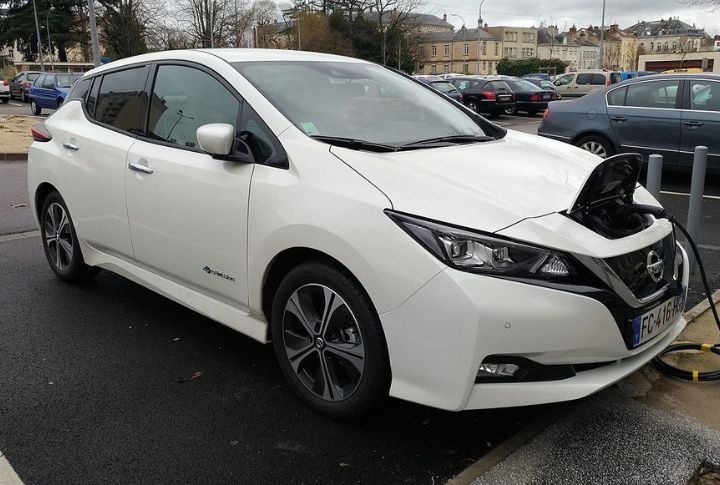
15 Key Innovations Shaping the Future of Electric Vehicles

The electric vehicle market is evolving at an unprecedented pace, driven by technological advancements, growing environmental awareness, and shifting consumer demands. The need for new, innovative components has never been more critical, as they’re essential for making EVs more sustainable, efficient, and accessible to a broader audience. Here are 15 advancements with that goal.
Solid-State Batteries

Such new batteries represent a significant leap forward from traditional liquid electrolyte batteries. Solid-state batteries offer higher energy densities than liquid electrolyte batteries, potentially extending the range of electric vehicles. The solid electrolytes also reduce the risk of leakage and fire and address significant safety concerns associated with traditional batteries.
Wireless Charging Technology

Inductive or wireless charging allows electric vehicles to be charged without physical connectors. It uses electromagnetic fields to transfer energy to a receiver on the car, and this eliminates the need to plug cables in. This makes the charging process more user-friendly, less cumbersome, and more convenient.
Advanced Thermal Management Systems

These systems use cooling and heating techniques, including liquid cooling, phase-change materials, and advanced thermal interface materials, to maintain optimal operating temperatures and improve performance. They help enhance the battery’s performance and efficiency, extend life, and improve vehicle range. However, balancing thermal management with overall vehicle efficiency can be challenging.
Lightweight Composite Materials

Carbon fiber, advanced polymers, and other lightweight composite materials reduce the weight of electric vehicles. These materials are known for their high strength-to-weight ratios, which reduce vehicle weight without compromising structural integrity. Lighter vehicles need less energy to accelerate and maintain speed and this improves overall efficiency and extended driving range.
Vehicle-to-Grid Technology

The new Vehicle-to-Grid (V2G) technology enables electric vehicles to draw power from the grid and return excess energy to it. This technology can help stabilize the electrical grid by providing a distributed energy storage source. Ultimately, this is valuable for integrating renewable energy sources. But, please note that implementing V2G technology requires significant upgrades to existing charging infrastructure and grid systems.
High-Efficiency Electric Motors

Scientists are developing new high-efficiency electric motors designed to improve electric car performance by optimizing the conversion of electrical energy into mechanical energy. More efficient electric motors reduce energy consumption, which can extend electric cars’ range. The downside is that advanced materials and technologies for high-efficiency motors can be expensive.
Smart Charging Systems

A focus on smart charging can reduce energy consumption and lower electricity costs by scheduling charging during off-peak hours or when renewable power sources are plentiful. These systems use advanced communication technologies and algorithms to optimize the charging process. They adjust charging rates based on electricity demand, grid conditions, and user preferences.
Vehicle-to-Everything (V2X) Communication

This is an umbrella term for technologies that enable your car to communicate with other vehicles (V2V), infrastructure (V2I), and even pedestrians (V2P). This communication enhances road safety by enabling vehicles to exchange information about their positions and speeds. Such technology reduces the likelihood of accidents. Yet, the extensive data exchange raises concerns about data privacy and security.
Recycled and Sustainable Materials

Using recycled and sustainable materials involves incorporating materials either reclaimed from other products or produced using environmentally friendly methods. It helps reduce the environmental footprint of vehicle production and decreases reliance on virgin resources. This technology also supports a circular economy by reusing materials and minimizing waste.
Advanced Driver Assistance Systems

Powered by sensors, cameras, radar, and artificial intelligence, advanced driver assistance systems provide features that enhance vehicle safety and convenience. By providing real-time alerts and automatic interventions, ADAS features can prevent accidents and decrease the severity of collisions. Unfortunately, these, too, increase vehicle costs.
Next-Generation Inverters

These innovations are advanced electronic devices that change the direct current from the car’s battery into alternating current. They use state-of-the-art semiconductor materials, like silicon carbide or gallium nitride, to improve efficiency and reduce losses. This leads to better vehicle performance and range. They’re also more compact and lighter.
Advanced Regenerative Braking Systems

Advanced regenerative braking systems convert kinetic energy from braking into electrical energy to improve electric cars’ performance. This electricity is stored in the vehicle’s battery, using sophisticated algorithms to maximize energy recovery and improve efficiency. They improve the vehicle’s range and reduce the need for frequent recharging while decreasing the wear and tear on brake components.
Autonomous Driving Technologies

These are advanced algorithms that enable cars to drive themselves with minimal human intervention by using sensors, cameras, radar, and LIDAR. They can potentially reduce accidents caused by human error and enhance road safety. They also offer greater convenience and accessibility for those who can’t or prefer not to drive.
Advanced Battery Management Systems

BMS or advanced battery management systems are critical for monitoring and managing electric vehicle batteries’ performance, health, and safety. They use sophisticated algorithms and sensors to track parameters such as voltage, temperature, and charge levels, optimizing battery operation and extending lifespan. At the same time, they improve battery safety by detecting potential issues such as overheating or overcharging.
High-Efficiency Heat Pumps

Relying on refrigerant and thermal exchange principles, high-efficiency heat pumps are used in electric vehicles to manage cabin temperature more efficiently than traditional heating systems. They provide heating and cooling with lower energy consumption and offer better climate control and passenger comfort with precise temperature management.


